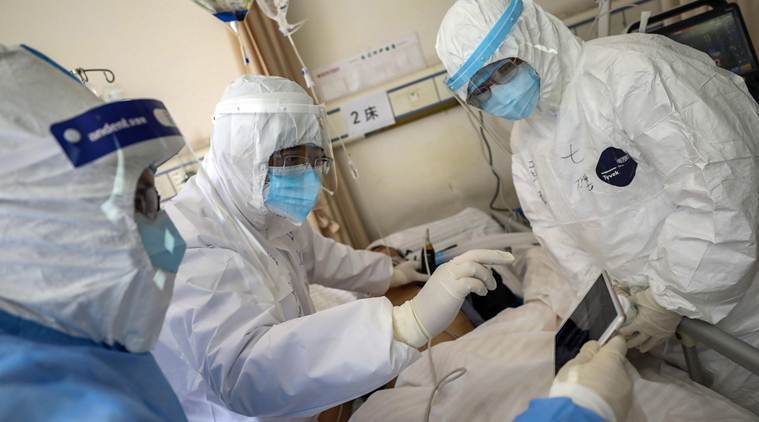 Numbers issued by the state government indicate that while the percentage of positive cases is coming down, it is still alarmingly high. (File Photo)
Numbers issued by the state government indicate that while the percentage of positive cases is coming down, it is still alarmingly high. (File Photo)
Even as the COVID-19 situation in Indore has improved from registering 256 positive cases in one day last week to reporting 295 new cases over the past eight days, the percentage of positive cases is still 21.02 per cent — indicating that one in five samples are testing positive.
Numbers issued by the state government indicate that while the percentage of positive cases is coming down, it is still alarmingly high. While April 17 saw a positive percentage of 25.12 per cent, the numbers dropped to 21.02 per cent by April 24. The mortality rate is down, from 10 to 11 percent recorded on April 13 to 5.3 to 4.84 per cent recorded last week. Recovery rate has gone up from 8.05 to 9.09 per cent.
A health department official told The Indian Express, “These numbers do not make for pretty reading. While it has come down slightly, one in five people to be testing positive, even from containment zones, is very high. Recovery rates are also quite low, but hopefully they will pick up. The continuing high percentage of positive cases is definitely a worry.”
Data shows that on April 17, Indore administration said there were 881 positives from 3,507 samples, 47 deaths and 71 recoveries. This meant a positive rate of 25.12 per cent, a mortality rate of 5.33 and a recovery rate of 8.05 per cent. By April 25, the numbers had become 1,176 positives from 5,594 samples, 57 deaths and 107 recoveries — positive percentage of 21.02 per cent, mortality rate of per cent and recovery rate of 9.09 per cent.
Indore Commissioner Akash Tripathi told The Indian Express that the numbers may be high, but the samples returning results are those collected primarily from containment zones. “We finished surveying containment zones a few days ago. Now we are surveying the remaining areas. But samples being tested are mainly still from containment zones and samples we are getting from ‘yellow hospitals’ to which symptomatic patients are coming.”
“The major source (of samples) now are people with Influenza-like Illness and Serious Acute Respiratory Illness from containment zones. That will finish in the next two days… after that, we will get results from areas outside the containment zones,” Tripathi said.
Tripathi said he is expecting another jump in cases over the next two days before the numbers start stabilising.
While the state government has argued that the high numbers are because of extensive testing, data shows that at least over the last week, from April 17 to 25, there have been only 2,087 new tests. The numbers between April 19 and 21 are stark, with only 166 new tests over three days, and 33 positives among them. Since April 21, four days have seen 320, 428 ,311 and 441 tests, respectively.
Tripathi said the testing blip was explained by two factors. “A lab technician was found positive so we had to quarantine our staff and collect their samples. They came negative the next day and then they could return to work. The other thing is that we installed an automated RNA extractor which takes half a day. So for two days, our testing was affected,” Tripathi said.
An IMCT team has been designated to Indore. Headed by Additional Secretary Abhilaksh Likhi, it has spent the last five days in the city.
A government official said, “Indore District in MP has 170 hotspots and their containment zones. The IMCT has directed district administration to deploy senior officers as ‘Incident Commanders’ in 21 critical hotspots and their containment zones that include 20 in the Indore town and one in the subdivision of Mhow. These 21 ‘Incident Commanders’ will closely monitor and supervise the working of the contact tracing and screening survey teams in these critical hotspots. They will also ensure timely active search, sample collection, testing and action to be initiated after results are received.”
The Indore Commissioner said the IMCT has also looked at the delivery of rations and asked for the setting up a home delivery system for fruits and vegetables.
He said there were clear signs of improvement in Indore, and that the number of patients in intensive care was reducing. “I believe the positivity rate in new samples is not more than 15 per cent. The number of admissions in yellow hospitals has gone down. These are good signs,” Tripathi said.